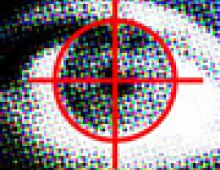
New Technology to Detect Illegal File-Sharing
The Fraunhofer Integrated Publication and Information Systems Institute (IPSI) has developped a new technology aimed at preventing illegal file-sharing on P2P networks.
The new system that will be introduced at Cebit 2006 in March, is composed of two software prototypes that are able to detect illegally exchanged files in file-sharing networks using the watermark technology combined with a P2P network client.
A software program enters a file-sharing network as a user, downloads potentially illegal copies and scans the P2P network for watermarks.
The IPSI is currently working on another system that automatically responds to search queries in file-sharing networks. The system would, for instance, display a warning to a participant, if the file requested happened to be an illegal copy. With the help of search queries addressed within the network the system would be able to compile a list of keywords to detect the requested files and would also prevent multiple downloads of the same file.
This would allow the files exchanged on the Internet to be correlated with a list of current music charts. The tool is designed as a means of discouragement to scare users who believe they are not observed when trading files on a file-sharing network.
"It is mainly a sort of copyright violation monitor in the case of the watermark search engine and a copyright reminder in the case of the response system " explains Michael Kip spokesman of IPSI.
These new tools could help retrace an individual downloading or sharing illegal files. "Sometimes it may be possible to trace the file sharers IP address, but this still means a lot of work to get back to the real world identity of the user", says Mr. Kip.
Mr. Kip agrees that the new tools would mostly serve the interests of companies dealing with the copyright issue. "But our overall aim is a more generic approach", he says by adding the softwares can also be used for analyzing and evaluating the traffic within file sharing networks or measuring the speed of content distribution within the network.
Both technologies are still prototypes in an advanced stage of research.
A software program enters a file-sharing network as a user, downloads potentially illegal copies and scans the P2P network for watermarks.
The IPSI is currently working on another system that automatically responds to search queries in file-sharing networks. The system would, for instance, display a warning to a participant, if the file requested happened to be an illegal copy. With the help of search queries addressed within the network the system would be able to compile a list of keywords to detect the requested files and would also prevent multiple downloads of the same file.
This would allow the files exchanged on the Internet to be correlated with a list of current music charts. The tool is designed as a means of discouragement to scare users who believe they are not observed when trading files on a file-sharing network.
"It is mainly a sort of copyright violation monitor in the case of the watermark search engine and a copyright reminder in the case of the response system " explains Michael Kip spokesman of IPSI.
These new tools could help retrace an individual downloading or sharing illegal files. "Sometimes it may be possible to trace the file sharers IP address, but this still means a lot of work to get back to the real world identity of the user", says Mr. Kip.
Mr. Kip agrees that the new tools would mostly serve the interests of companies dealing with the copyright issue. "But our overall aim is a more generic approach", he says by adding the softwares can also be used for analyzing and evaluating the traffic within file sharing networks or measuring the speed of content distribution within the network.
Both technologies are still prototypes in an advanced stage of research.




















